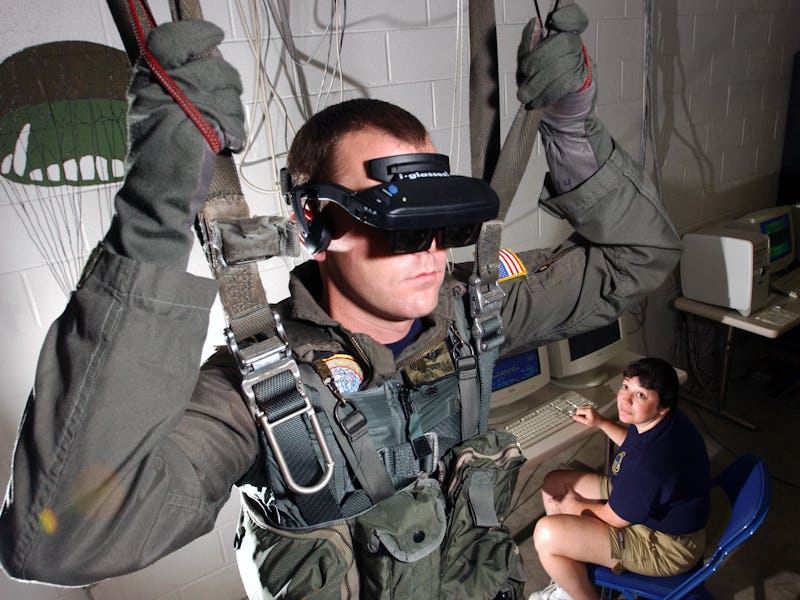Virtual Reality May Be Greatly Improved by Electric Shocks in Your Head
Putting an end to VR-induced motion sickness — and tricking your mind.

A company working in conjunction with the Mayo Clinic and the U.S. military claims to be redefining virtual and augmented reality. vMocion’s advancements in Galvanic Vestibular Stimulation – a.k.a. shocking your cranium – promise to both alleviate virtual reality-induced motion sickness and trick a user’s sense of motion.
And GVS, if vMocion gets its way, may soon be incorporated into lots of the tech you know and love: the press release announces that it can be “integrated into existing operating systems, and added to existing devices such as head-mounted devices, smartphones, 3D glasses and TVs.”
GVS works by electrically stimulating the inner ear’s vestibular system, which is how your body interprets motion and accordingly adjusts and maintains balance. Four electrodes, which are for now embedded in a headband, stimulate four different points on your scalp. The system responds to changes in the virtual environment’s field of vision and adjusts its stimulation. The company claims that these minuscule, controllable shocks can give the wearer the illusion of movement in three-dimensions — “left-to-right rotation, forward and backward motion, and side-to-side motion.”
In other words, you can be sprawled across your couch and be misled to believe that you’re actually pitching and yawing inside the fighter jet you’re virtually controlling. And, the company claims, you won’t vomit from VR’s motion sickness plague. Many VR users report motion sickness, and science can explain why. When there’s a disconnect between what we’re experiencing and what we’re feeling, our bodies and minds get confused. One side is car-induced motion sickness, where your body is both stationary and moving at, say, 60 miles per hour. When your body cannot adequately anticipate the movements it’ll experience – like that hard right turn coming up, while your head’s in a book – motion sickness can result. The flip side is in VR, where you’re perceiving sometimes drastic changes in movement and yet your body remains static. This, too, can confuse your dumb body.
A fancy illustration that sort of vaguely explains the GVS technology, but really just looks pretty.
Patent applications show that researchers have attempted to solve motion sickness with vestibular system stimulation for decades. (Some of these patent illustrations get pretty amusing.)
But, vMocion and the Mayo Clinic claim no more must we submit to such outmoded evolutionary mechanisms. The project began in the military, with four United States Army and Navy contracts to Infoscitex that totaled almost $1.5 million. (The presumed argument being that pilots-in-training will be able to remain within flight simulators for far longer than previously possible, nausea-free, and, also: “the present invention would allow for a subject to go through a simulator training session without getting sick and then fly the real mission immediately after the simulator.”)
FIG. 3 is a depiction of perceived motion in response to directed stimulation of electrode sets.
Infoscitex, in turn, seems to have funded the Mayo Clinic’s research – both are listed on one patent application. And then, once there was a prototyped product with studies to back up its claims, vMocion swooped in to commercialize.
vMocion does have some catching up to do in the market, though — Samsung’s long been onboard the GVS train, and it’s already got a functional product to boot, unveiled at SXSW: the Entrim 4D headphones, which work together with the Gear VR headset.
But it’s not only entertainment that stands to benefit from vMocion’s new GVS efforts: there are medical applications, too. People who experience vertigo or other balance issues may be able to use GVS to correct the inner-ear vestibular malfunctions.
In an attempt to sell its technology, vMocion is naturally making dramatic claims: “This completely transforms the entertainment experience into something you feel – not just see or hear,” one video announces. If major VR and AR companies start hopping on board, that’ll add some credence to the legitimacy of these claims.